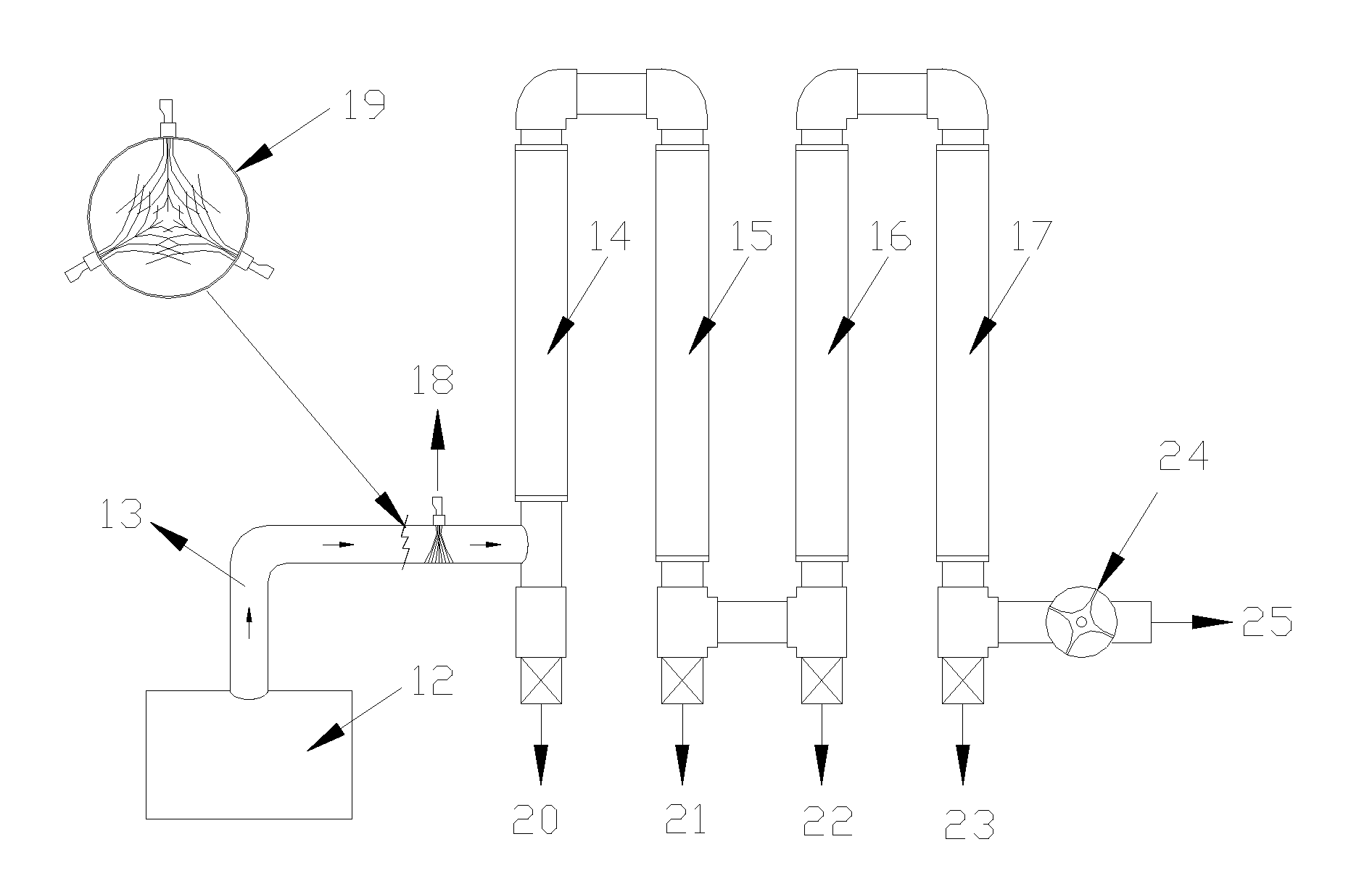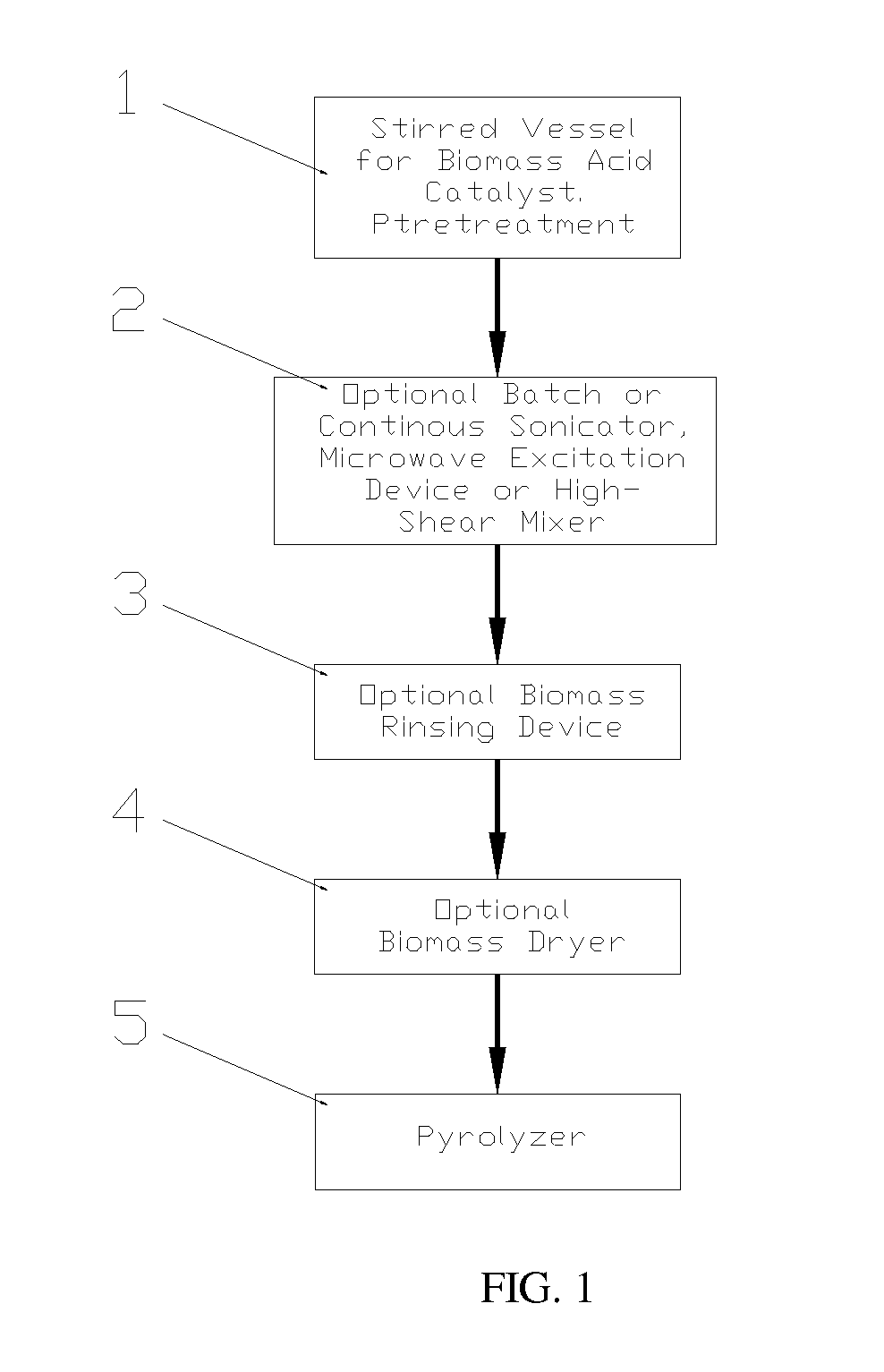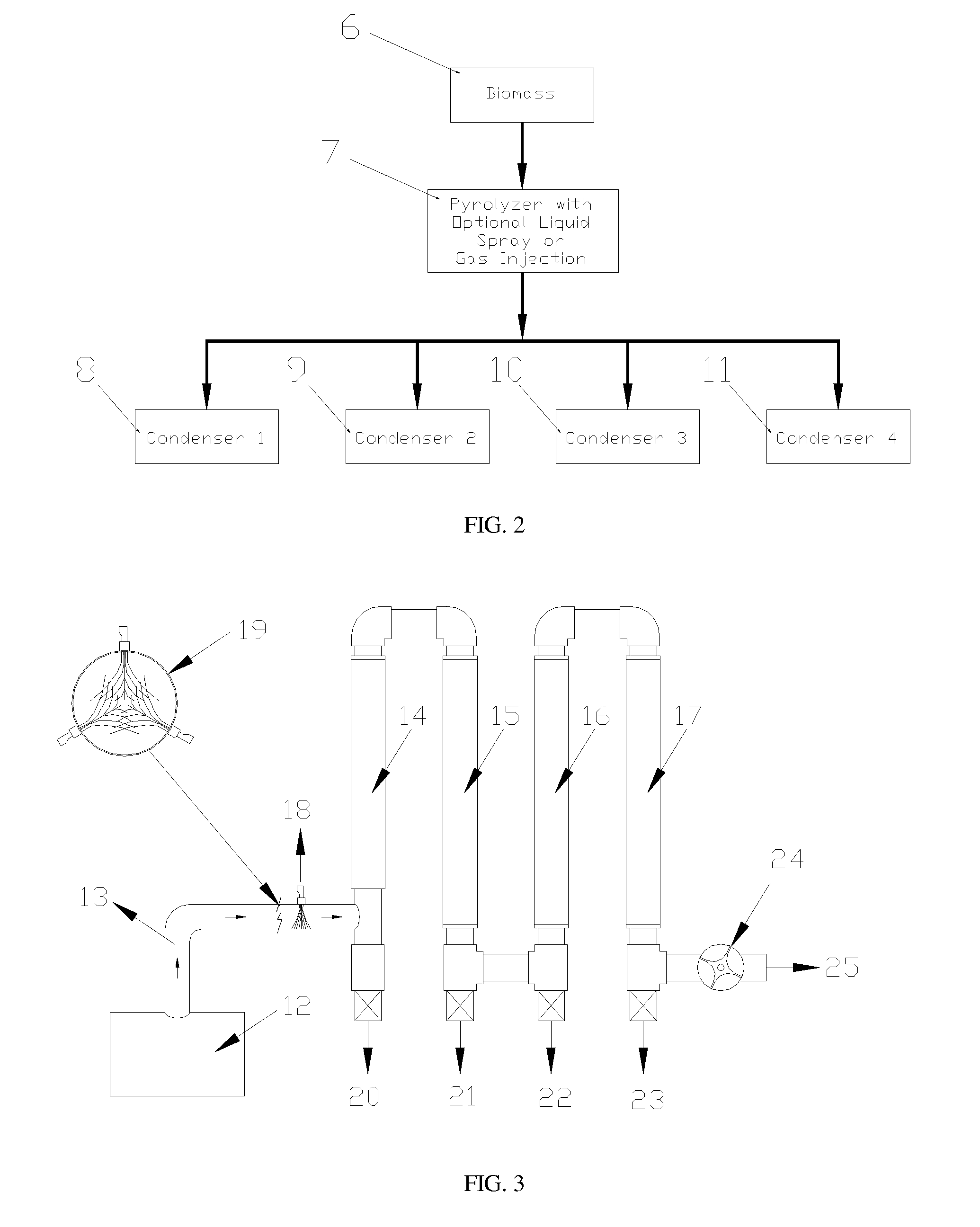Method of increasing anhydrosugars, pyroligneous fractions and esterified bio-oil
a bio-oil and pyroligneous technology, applied in the field of increasing anhydrosugars, pyroligneous fractions and esterified bio-oil, can solve the problems of low yield of levoglucosan reported by brown (2009), and high water content, so as to increase the acid catalyst rate, increase the yield of anhydrosugars, and increase the reactivity
- Summary
- Abstract
- Description
- Claims
- Application Information
AI Technical Summary
Benefits of technology
Problems solved by technology
Method used
Image
Examples
example 1
[0059]The anhydrosugars increase and fractionation process is further illustrated by the following example:
[0060]Bio-oil vapors were produced in the MSU pyrolysis reactor by pyrolyzing biomass at 450° C. Table 1 gives the values of feedstock and water spray input to the pyrolysis reactor and the bio-oil and aqueous fraction outputs. The Table 1 values will be referenced throughout this discussion. In this example 3500 grams loblolly pine particles, dried to 1% moisture content, and of 1 to 3 mm size were pyrolyzed in the MSU auger reactor at a rate of 7 kg / h to produce approximately 3 liters per hour of bio-oil. The MSU auger reactor design employs a cross pipe from the main reactor tube to transport pyrolysis vapors to the condenser train comprised of multiple fractionating condensers. During transfer in the vapor cross pipe vapors were quenched with a spray of deionized water. In this experiment 271 g of water was sprayed into the vapor stream.
[0061]For a 450° C. pyrolysis tempera...
PUM
| Property | Measurement | Unit |
|---|---|---|
| temperature | aaaaa | aaaaa |
| temperature | aaaaa | aaaaa |
| temperature | aaaaa | aaaaa |
Abstract
Description
Claims
Application Information
 Login to View More
Login to View More - R&D
- Intellectual Property
- Life Sciences
- Materials
- Tech Scout
- Unparalleled Data Quality
- Higher Quality Content
- 60% Fewer Hallucinations
Browse by: Latest US Patents, China's latest patents, Technical Efficacy Thesaurus, Application Domain, Technology Topic, Popular Technical Reports.
© 2025 PatSnap. All rights reserved.Legal|Privacy policy|Modern Slavery Act Transparency Statement|Sitemap|About US| Contact US: help@patsnap.com



